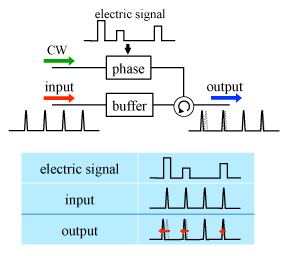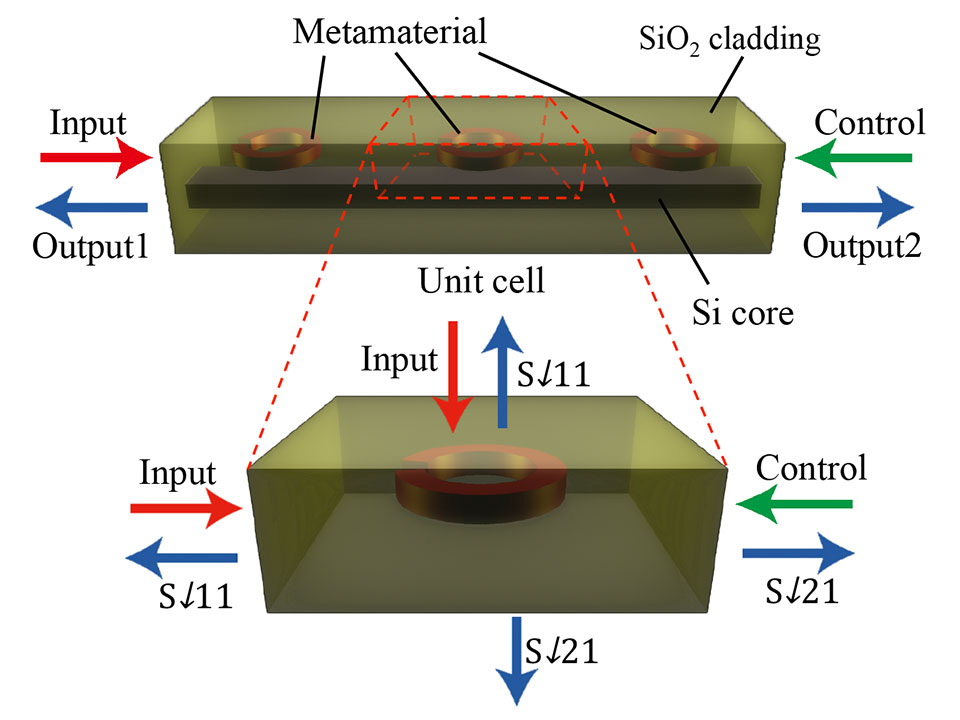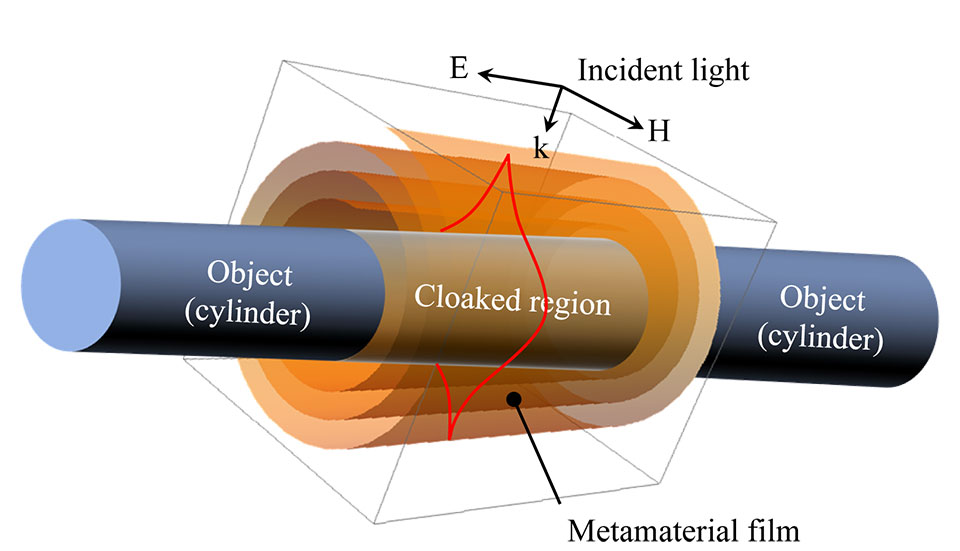

In recent years, research on creating materials that do not exist in nature by artificially controlling the values of permittivity and permeability, which have been thought to be unique to materials, by utilizing vibrations of free electrons in metal nanostructures has been actively conducted. This artificial substance is called “metamaterial”. Our laboratory applies this technology to optical devices and aims to realize functions that have never existed before. Optical devices can be divided into two major topics: “guided optics” and “spatial optics”, and we are approaching each of them.
“Waveguide optics” is mainly used in optical communication device applications. The simplest and most promising property of metamaterial in optical waveguide device is the high refractive index change associated with the change in permeability. These can be expected to realize the slow light effect and optical trap phenomenon in the optical waveguide, and to improve the performance and miniaturization of conventional devices.
“Spatial optics” is mainly used in imaging applications. One of the technologies brought about by special electromagnetic wave control by metamaterials is optical camouflage (that performs spatial control of electromagnetic waves such as detours and shielding). In our laboratory, we have developed an organic thin film (metamaterial film) as a tool for that purpose, and it is possible to realize optical camouflage simply by ‘wrapping around this object’.

7F, S9-1, 2-12-1 O-okayama, Meguro-ku Tokyo 152-8552, Japan +81-3-5734-2555 ee.e titechnishiyama
Nishiyama lab. Student's room : South Bldg. 9 #701, #706, #707 |
Measurement room : South Bldg. 9 #604, #502, #201 |
Clean room : South Bldg. 9 #202, B1F Exposure house |
Research Laboratory of Ultra-High Speed Electronics